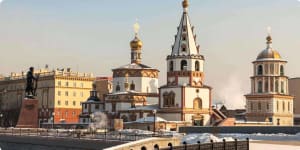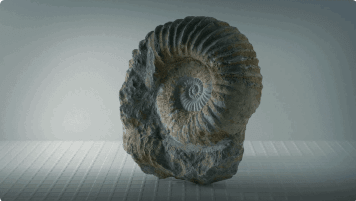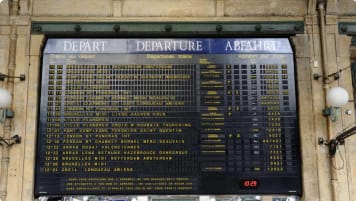Irkutsk to Helsinki on the Trans-Siberian Railway
Escorted tour on the Trans-Siberian railway network from East to West starting in Irkutsk and finishing in Helsinki after 21 days. This is small group travel with like minded people and itineraries that maximise the travel experience of the 6 key destinations explored en-route. Our small group journeys are for mature couples and solo travellers.
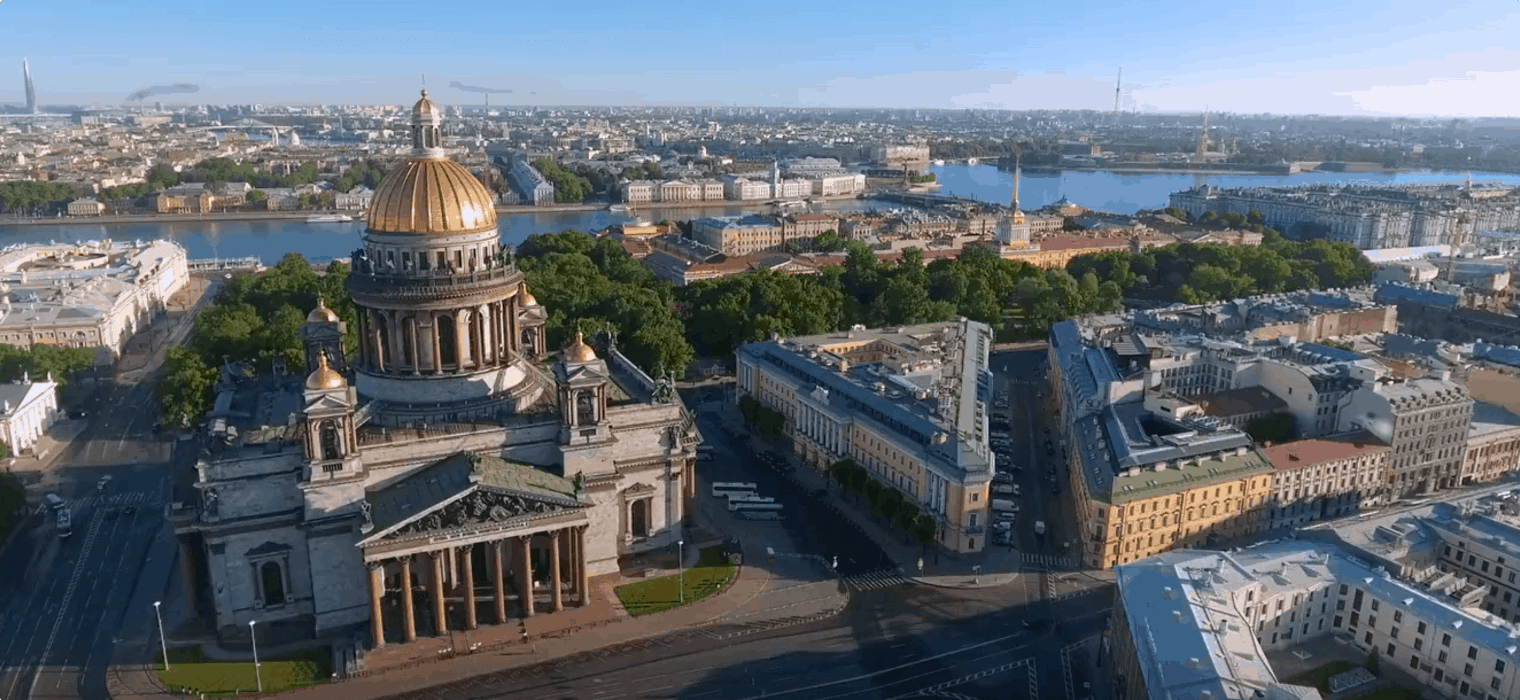
Highlights
- 1. See the glorious museums of Yekaterinburg.
- 2. Experience a performance by the world-famous Mariinsky Opera and Ballet Company in Russia’s famed cultural capital, St Petersburg
- 3. See the giant granite rock formations in the oldest national nature reserve in Russia, Stolby Nature Sanctuary.
- 4. Visit Lake Baikal, one of the world’s oldest and deepest freshwater lake.
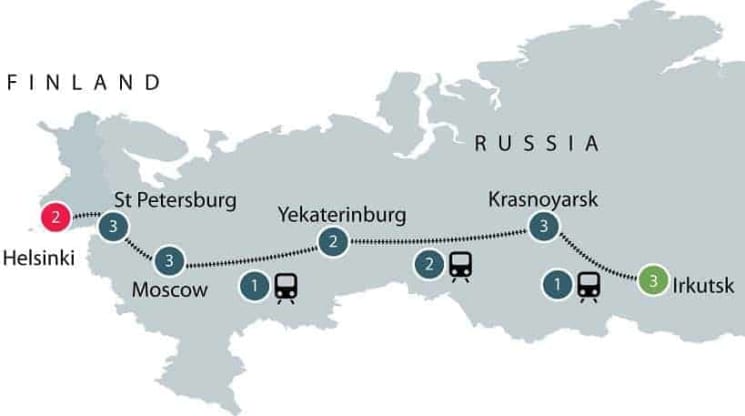
Trans-Siberian Rail Tour: Irkutsk to Helsinki by Rail in 21 days
SUSPENDED UNTIL FURTHER NOTICE.
For details on our programs and an up-to-date list of guaranteed departures, please https://www.odysseytraveller.com/tour-category/guaranteed/
This 21-day Trans-Siberian Rail Tour from Irkutsk to Helsinki is designed for senior travellers (solo travellers or travelling with company) who are interested in history and culture. Group size is typically between four to 12 travellers, fully escorted by an Odyssey Program Leader and local guides. This tour, traversing Russia from east to west, promises varied landscapes and experiences, and a chance to deepen your knowledge and appreciation of Russian history.
Join Odyssey Traveller as we embark on the greatest train journey in the world, the Trans-Siberian Railway, travelling from Irkutsk, the jewel of Eastern Siberia, to beautiful St. Petersburg and Moscow, and onward out of Russia to the vibrant city of Helsinki, Finland's capital.
This tour spends multiple nights in the following destinations:
Irkutsk, situated in the rolling hills and the subarctic forests of eastern Siberia, is the administrative centre of the Irkutsk oblast (region) in Eastern Siberia. It is a popular stop on the Trans-Siberian Railway due to its proximity to UNESCO-listed Lake Baikal, the largest, deepest, and oldest freshwater lake in the world. Irkutsk was one of the towns built by Russian traders and Cossack explorers, founded as a zimovye (wintering camp or winter quarters) in 1652, later gaining town rights in 1686. A road connection between Moscow and the new Siberian city led to Irkutsk becoming the main centre of the Russian trade route to China and Mongolia. It grew more prosperous with the coming of the railway in 1898, as European Russians can travel through the Siberian wilderness by train. This Siberian city was given the nickname, “Paris of Siberia”.
Krasnoyarsk is one of the oldest Siberian towns, sitting on both banks of the Yenisey River it has a long history as an important hub of Trans-Siberian activity. The city was originally founded as a fort on the left bank of the Yenisey by Cossack leader Andrey Dubenskoy who called it “Krasny Yar”—or “red steep riverbank” in the Khakas dialect—in 1628. In March 1891, tsar Alexander III officially announced the building of a Trans-Siberian Railway. His son and heir apparent Nicholas laid the first stone at Vladivostok (“lord of the East”). The railway connected Krasnoyarsk in Siberia with Moscow and St Petersburg in European Russia. With the train bringing goods and manpower, Krasnoyarsk continued developing and expanding, eventually moving across the river to occupy the right bank of the Yenisey.
Yekaterinburg sits on the eastern slopes of the Ural Mountains, about 1,667 kilometres east of Moscow. This city in the heart of the Ural region is located just east of the border of Europe and Asia, a window to the resources of Siberia, and a hub for tourism and industry. Dubbed the “third capital of Russia” (after Moscow and St Petersburg) due to its size and economic power, Yekaterinburg figures in Russia’s intricate history, from the rise of its revolutionary movements to the execution of its last Tsar, Nicholas II.
Moscow is Russia’s political center and its most populous metropolis. Viewed from the air, Moscow’s city layout resembles concentric rings circling the Kremlin, the seat of the Russian government. Moscow's history dates back to 12th century, as does the history of one of its most famous landmarks, the Kremlin, the site housing one of the areas earliest fortifications. Moscow grew in importance as a regional trade hub along the Moskva River, becoming the capital of the Grand Principality of Muscovy, which grew in power annexing the princes of Novgorod and Khanates in Tartary to become the Russian heartland we know today. Following the construction of St Petersburg in 1712 the capital periodically shifted between the two cities.
St. Petersburg was Russia’s capital from 1712 to 1918, its reign as imperial capital ending with the 1917 Bolshevik Revolution (October Revolution) that toppled the tsarist regime. The succeeding Soviet government then moved the seat of power back to the old capital, Moscow, which remained as the capital city in post-Soviet Russia. St Petersburg was founded in 1703 by Peter the Great along the banks of the River Neva, designed to be Russia's new 'Western' capital it reflects the westward looking vision of Russia at the time, with a focus on western European inspired art and architecture visible till today.
Helsinki is the capital city of Finland, is a treasure trove for lovers of history and all eras of architecture and design. Dubbed the “white city of the north” due to its buildings constructed from locally available light-coloured granite, it was built in a Neoclassical style, modelled off of the then Russian capital, St Petersburg. Helsinki was shaped by Finland’s powerful western and eastern neighbours—Russia and Sweden, passing between both powers for much of its history before finally gaining independence in 1917. Helsinki was declared the World Design Capital in 2012, and remains a centre for innovative architecture today. Most notable is the Amos Rex gallery, opened in 2018.
For more details, click the ‘Top 5’ or ‘Itinerary’ buttons above! If you’re keen to experience this tour, please call or send an email. Or, to book, simply fill in the form on the right-hand side of this page.
Odyssey Traveller Tours by Railway
Odyssey Traveller regularly offers tours designed for the active senior traveller to enjoy in a small group holiday and learning environment. We also publish articles to provide more information to our loyal and prospective participants.
If you want to learn more about the Trans-Siberian Railway and the train journey, click through to read the following articles prepared by Odyssey Traveller:
- Overview, which includes tips on booking your ticket and preparing for the long train ride.
- History of the Trans-Siberian Railway
- Trans-Siberian Landscapes and Wildlife
You may also want to check out our tour also travelling on the Trans-Siberian Railway, from Mongolia to Russia, and from Krasnoyarsk to Vladivostok.
For a different pace and cultural experience, you may want to explore our other small group tours by Rail:
- Japan History by Rail tour which journeys through Japan on the shinkansen (high-speed train)
- French History by Rail tour which goes through Paris and the other cities of France; we have a 21-day tour and a shorter 11-day tour
Additional advice on travelling across Finland and Russia with this Trans-Siberian Rail Tour from Irkutsk to Helsinki
You can read our country profiles on Finland and Russia.
These external links provide you with additional information on travelling through Russia that will improve your journey.
- Travel by Train 101: Everything You Need to Know About ...
- How to plan & book a journey on the Trans-Siberian Railway
Other articles of possible interest is this two-part post filled with travelling tips for seniors, an article on the many nifty gizmos and gadgets you can bring on your trips, and an important article about practising responsible travel.
Gallery
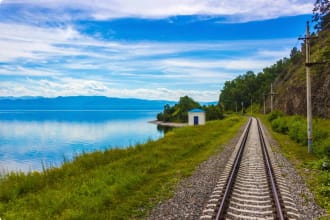
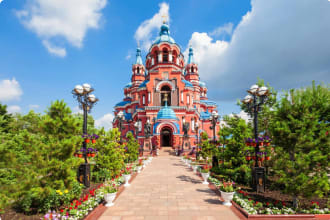
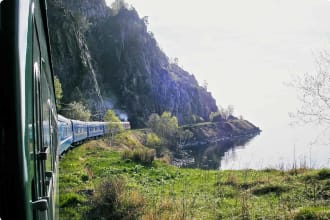
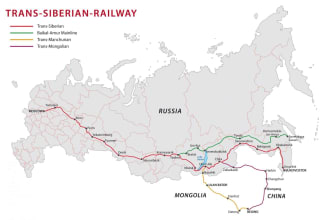
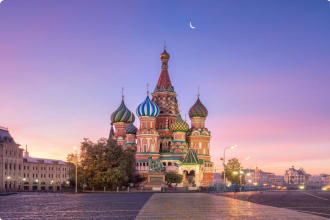
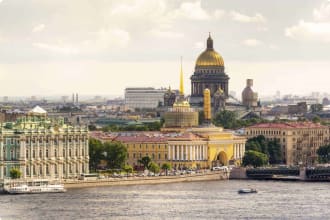
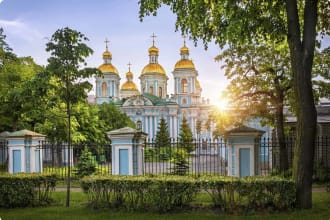
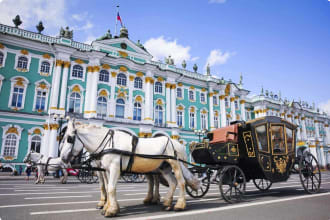
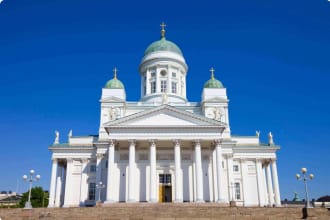
Itinerary
Day 1: IRKUTSK
Accommodation: Hotel Yevropa or similar
On arrival in Irkutsk, we make our way individually to the hotel. In the evening, we meet for a welcome dinner and orientation.
Day 2: IRKUTSK
Accommodation: Hotel Yevropa or similar
Irkutsk is often called the “de facto capital” of Eastern Siberia. Irkutsk became a place of exile for intellectuals, artists, and nobles who revolted against Tsar Nicholas I in the early 19th century–at one point there were two exiles per local residing in the city, turning Irkutsk into a scholarly and artistic hub. Their influence is still very palpable in the city’s architecture and aesthetics.
Today we will go on a city tour and learn more about Irkutsk’s history through its architecture and museums. We will hear about the Novemberists, the October Revolution, the Red and White Armies of Russia, and the Bolsheviks who came to power after the fall of the tsarist regime.
We will visit the Taltsy Architectural and Ethnographic Museum, which used to be the site of a real village called “Taltsy”. When the Ust-Ilimskaya hydroelectric power station was constructed, a part of Taltsy came in danger of being flooded. The Russian government decided to evacuate the people out of town and preserve the village–complete with water mills, houses, and a school–as a museum.
Day 3: IRKUTSK
Accommodation: Hotel Yevropa or similar
Today we will go on a trip to Lake Baikal, the largest, deepest, and oldest freshwater lake in the world. It contains nearly a quarter of the world’s fresh surface water, more water than all of the Great Lakes of North America combined. It has a depth of 1.6 kilometres (around a mile) and is considered the world’s oldest lake at 25 to 30 million years old. Lake Baikal is home to more than 1,700 species of plants and animals, 80% of them endemic to the area, which means these species are found nowhere else. The Circumbaikal Railway train chugs along around the perimeter, offering a scenic and leisurely ride around the lake. If time permits, we will take a boat trip on the lake itself.
Day 4-5: IRKUTSK TO KRASNOYARSK
Accommodation: Hilton Garden Inn Krasnoyarsk or similar
Today we will hop aboard the Trans-Siberian Railway and travel by train for 20 hours westward to Krasnoyarsk. The Trans-Siberian trains moves at a speed of at most 90 km/h, giving passengers a time to relax. Upon arrival in Krasnoyarsk, we will have the rest of the day free to ourselves.
“Taiga” is a forest of the cold, subarctic region. The word means “land of the little sticks” in Russian. The world’s largest taiga is in Russia, covering 5,800 kilometres (3,600 miles), which means this is the landscape you will most likely see from the windows of the Trans-Siberian trains. The Russian taiga has primarily pine and fir trees, which we will watch pass by as we chat with fellow travellers and sip hot tea courtesy of the samovar.
Day 5: KRASNOYARSK
Accommodation: Hilton Garden Inn Krasnoyarsk or similar
Krasnoyarsk, located more than 4,000 kilometres from Moscow, is one of the oldest Siberian towns. It was founded by Russian traders and Cossack explorers in 1628, nearly a quarter of a century after a Cossack expedition led by Yermak Timofeyevich captured Isker, capital of the khanate of Sibir (from which Siberia derives its name), beginning Russia’s expansion into the region.
We head out as a group for a short city tour. Here we take in the important sites in the city, including Mira Square (Peace Square), the oldest square in historic Krasnoyarsk. The city’s historical gateway, the Arch of Triumph, stands here in the place of a tower of Krasnoyarsk Prison, which burned down in 1773. Mira Square offers a view of the Yenisey River. We ascend to Karaulnaya Hill, a good vantage point to see the whole of the city. We will also visit a monument to its founder, Andrey Dubensky, and the Praskovya Pyatnitskaya Chapel. The rest of the day can be spent at our leisure.
Day 7: KRASNOYARSK
Accommodation: Hilton Garden Inn Krasnoyarsk or similar
After seeing the sites of the city, today we head to the Krasnoyarsk Hydroelectric Power Station dam, the first power station built on the Yenisey River. The dam is located 30 kilometres upstream and we will drive through beautiful scenery. Midway through to the dam we will stop on a lookout place that offers a gorgeous view of the river and the Siberian forests.
We will then visit the Stolby Nature Sanctuary. Founded in 1925 by locals, Stolby (“pillars”) derives its name from the unusual shapes of its rock formations mostly of sedimentary and volcanic origin, dating back to the Cambrian Period, making the rocks more than 600 million years old. A small portion of the huge nature reserve (“Central Stolby”, around 4% of the reserve’s total land area) is open to the public, while the rest (“Wild Stolby”) is not recommended to tourists. The nature reserve is surrounded by taiga, so the flora is predominantly made of coniferous trees such as pine and silver fir.
Day 8-9-10: KRASNOYARSK TO YEKATERINBURG
Accommodation: Novotel Yekaterinburg, Hotel Tsentrainy, or similar
We will once again board a train and travel closer to European Russia on the Trans-Siberian Railway towards Yekaterinburg. We will take the evening train and spend 2 nights on board. This will be our longest journey on the train for this tour, as we will be travelling for 33 hours.
Day 11: YEKATERINBURG
Accommodation: Novotel Yekaterinburg, Hotel Tsentrainy, or similar
Yekaterinburg (also spelled Ekaterinburg) sits on the eastern slope of the Ural Mountains, which forms a boundary between Europe and Asia. The city was given its name in 1723, named after Russian emperor Peter the Great’s wife, Yekaterina, who succeeded him as Empress Catherine I after his death in 1725.
Yekaterinburg became the centre for all the iron works of the Urals region, and in 1878 the Trans-Siberian Railroad arrived and linked it with Siberia. Yekaterinburg also became infamous when, in 1918, the fallen tsar Nicholas II and his family were killed here by firing squad.
Our local guide will outline for us Russia’s history, covering pre-history, the industrialisation initiated by Peter the Great, the October Revolution, the Soviet era, and the modern era, through visits to museums and historic sites. We will also take a drive in the afternoon to see examples of local farming techniques.
Day 12-13: YEKATERINBURG TO MOSCOW
Accommodation: To be advised.
Today is reserved for our 30-hour journey by train to Moscow, Russia’s capital. The train passes at kilometre post 1777, a white obelisk marking the boundary between Europe and Asia. We will settle in our accommodation upon arrival.
Day 14: MOSCOW
Accommodation: To be advised.
Today we will have a much-deserved rest after our train journey. We can use this time to catch up with laundry, shop, or simply restore our energies for the trip ahead.
Day 15: MOSCOW
Accommodation: To be advised
Moscow is Russia’s political centre and its most populous metropolis. Viewed from the air, Moscow‘s city layout resembles concentric rings circling the Kremlin, the seat of the current Russian government and its predecessor, the USSR. We will view the heavily guarded Kremlin during a boat cruise on the river, before we venture into the city with a local guide. We will explore Moscow‘s towers, garden, enormous Tsar Bell, and the cathedral square at its heart. The Red Square, St Basil’s and Kazan Cathedrals and the State History Museum are among our stops.
Later, we sample Georgian cuisine at Tifils restaurant. Pending local programming, we enjoy a second performance — perhaps the opera, ballet, theatre, or even the circus. Moscow is brimming with cultural events.
Day 16: MOSCOW TO ST. PETERSBURG
Accommodation: To be advised
Today we travel by train during the day to St. Petersburg.
Day 17: ST. PETERSBURG
Accommodation: To be advised
St Petersburg was Russia’s capital from 1712 to 1918, following the 1917 Bolshevik Revolution (October Revolution) that toppled the tsarist regime. The city is often compared to the current capital, Moscow. It is often said that Moscow is “traditionally” Russian, with buildings designed by Russian architects, while St Petersburg has absorbed influences from Western Europe. (Interesting fact: the city was renamed “Petrograd” in 1914 at the start of the First World War to make it sound less German.)
Today is the first of two full days to explore the cultural heritage of this vibrant city. We enjoy a tour with a local guide, and visit the Botanical Gardens, or, to use its full name, the Botanical Garden of the V.L. Komarov Institute of the Russian Academy of Sciences. This is Russia’s oldest botanical garden, founded in 1714 by order of Peter the Great. Today, it mostly follow an English landscape style, with many diverse species available for our appreciation. The giant water lilies, which bloom during the summer, are a highlight.
While we are in St Petersburg, we will experience a performance of either the ballet or opera — depending on local programming.
Day 18: ST. PETERSBURG
Accommodation: To be advised
Today we visit some of St Petersburg’s most historically significant sites, including the Hermitage — Russia’s most famous palace and equally famous art collection, containing pieces from Matisse, Rubens, Rembrandt, and Picasso. The Winter Palace is now part of the Museum complex, but was the official residence of the monarchs until 1917.
St Isaac’s Cathedral is the world’s largest orthodox basilica (and fourth largest cathedral). It houses a museum where we can learn about the building’s historic and cultural significance. Later, we board the Vladimirskay metro, bound for the vibrant Kuznechny market.
In the evening, we dine at the popular Austeria restaurant, located within the Peter and Paul Fortress. Now a museum, St Petersburg’s original citadel provides views across the city’s popular, sandy beaches. We enjoy traditional Russian fare and live music.
Day 19: ST. PETERSBURG TO HELSINKI
Accommodation: To be advised.
Today we will be leaving Russia and crossing the border into Finland to journey into Helsinki. This relaxing journey will take up the full day.
Day 20: HELSINKI
Accommodation: To be advised
Helsinki was once under the rule of the Russian Empire as part of the Grand Duchy of Finland, serving as the duchy’s capital starting in 1812.
Today we will step back in time and experience a tour of Helsinki by vintage tram, a relaxing way to take in the sights and sounds of the “white city of the north”.
Day 21: HELSINKI
The end of breakfast also marks the end of the tour and our services.
Includes / Excludes
What’s included in our Tour
- 16 nights hotel accommodation.
- 4 nights travel aboard the Trans Siberian in 4 berth compartments, with exclusive use for 2 or 3 people (depending on final group size).
- 16 breakfasts, 3 lunches and 12 dinners.
- Transport and field trips as indicated.
- Applicable entry fees and services of local guides.
- Gratuities and necessary tips.
- Invitation letter for Russian Visa.
- Services of an Odyssey program leader.
- Detailed Tour Information Booklet.
What’s not included in our Tour
- International airfares and departure taxes
- Comprehensive Travel Insurance.
- Cost for a Russian Visa. Odyssey will assist in obtaining the invitation letters for your visa.
- Meals not specified in the itinerary and on board the trains.
- Items of a personal nature, such as telephone calls and laundry.
Participants must be able to carry their own luggage, climb and descend stairs, be in good health, mobile and able to participate in 3-5 hours of physical activity per day, the equivalent of walking / hiking up to 8 kilometers per day on uneven ground.
Book now
Make it a private tour
Easing your journey
Crossing international borders with restrictions
The list of requirements to travel internationally has changed and will continue to change for several years. Odyssey is here to assist you in managing your way through these requirements:
For more information see our Crossing international borders with restrictions page.
Book With Confidence
If less than 30 days before your tour starts you are unable to travel as a result of Government travel restrictions, Odyssey Traveller will assist you with a date change, provide you with a credit or process a refund for your booking less any non-recoverable costs.
See Terms and conditions for details.
Peace of Mind Travel
The safety of our travellers, tour leader, local guide and support staff has always been our top priority and with the new guidelines for public health and safety for keeping safe for destinations around the world, we’ve developed our plan to give you peace of mind when travelling with us.
See Peace of Mind Travel for details.
Reading List Download PDF
A History of Modern Russia: From Nicholas II to Vladimir Putin
Robert Service
Russia had an extraordinary twentieth century, undergoing upheaval and transformation. Updating his acclaimed History of Twentieth-Century Russia through 2002, Robert Service provides a panoramic perspective on a country whose Soviet past encompassed revolution, civil war, mass terror, and two world wars. He shows how seven decades of communist rule, which penetrated every aspect of Soviet life, continue to influence Russia today. This new edition also discusses continuing economic and social difficulties at the beginning of the twenty-first century, the military campaign in Chechnya, and Russia's reduced role on the world stage.
To the Edge of the World: The Story of the Trans-Siberian Express, the World's Greatest Railroad
Christian Wolmar
To the Edge of the World, is an adventure in travel—full of extraordinary personalities, more than a century of explosive political, economic, and cultural events, and almost inconceivable feats of engineering. Christian Wolmar passionately recounts the improbable origins of the Trans-Siberian railroad, the vital artery for Russian expansion that spans almost 6,000 miles and seven time zones from Moscow to Vladivostok. The world's longest train route took a decade to build—in the face of punishing climates, rampant disease, scarcity of funds and materials, and widespread corruption.
The line sprawls over a treacherous landmass that was previously populated only by disparate tribes and convicts serving out their terms in labor camps—where men were regularly starved, tortured, or mutilated for minor offenses. Once built, it led to the establishment of new cities and transformed the region's history. Exceeding all expectations, it became, according to Wolmar, “the best thing that ever happened to Siberia.”
It was not all good news, however. The railroad was the cause of the 1904–1905 Russo-Japanese War, and played a vital—and at times bloody—role in the Russian Revolution and the subsequent Civil War. More positively, the Russians were able to resist the Nazi invasion during the Second World War as new routes enabled whole industries to be sent east. Siberia, previously a lost and distant region, became an inextricable part of Russia's cultural identity. And what began as one meandering, single-track line is now, arguably, the world's most important railroad.
Strange Siberia Along the Trans-Siberian Railway: A Journey From the Great Wall of China to the Skyscrapers of Manhattan
Marcus Lorenzo Taft
Excerpt from Strange Siberia Along the Trans-Siberian Railway: A Journey From the Great Wall of China to the Skyscrapers of Manhattan
Throughout our journeyings in the Tsar's dominions, we were entirely free from any dread of being shadowed by a Russian spy. During our sojourn at Tomsk, the capital of Siberia, we were not even asked to show our passport. Who can say but that our ex emption from all such espionage, of which travelers in Russia so generally complain, was due to the fact that a playful child was unconsciously acting as mascot for our Taft party?
East of the Sun: The Epic Conquest and Tragic History of Siberia
Benson Bobrick
The very word Siberia evokes a history and reputation as awesome as it is enthralling. In this acclaimed book on Russia’s conquest of its eastern realms, Benson Bobrick offers a story that is both rich and subtle, broad and deep.
From its conquest by Cossacks and its exploration and settlement in the sixteenth and seventeenth centuries, through its terrifying Gulag history, to its modern place in a world hungry for natural resources, Siberia –covering a sixth of the world’s surface – has a history unlike any other land. East of the Suncaptures all of Siberia’s history with a depth and flavor that will satisfy both well-informed historians and newly-cast Russophiles alike.
Lonely Planet Russia (Travel Guide)
Simon Richmond et al
Lonely Planet Russia is your passport to the most relevant, up-to-date advice on what to see and skip, and what hidden discoveries await you. Brush up on your Soviet and imperial history in Moscow and St Petersburg, explore European Russia and its gingerbread cottages and golden domes, or lose yourself in the wilds of Siberia and the east; all with your trusted travel companion. Get to the heart of Russia and begin your journey now!
Irkutsk to Helsinki on the Trans-Siberian Railway
